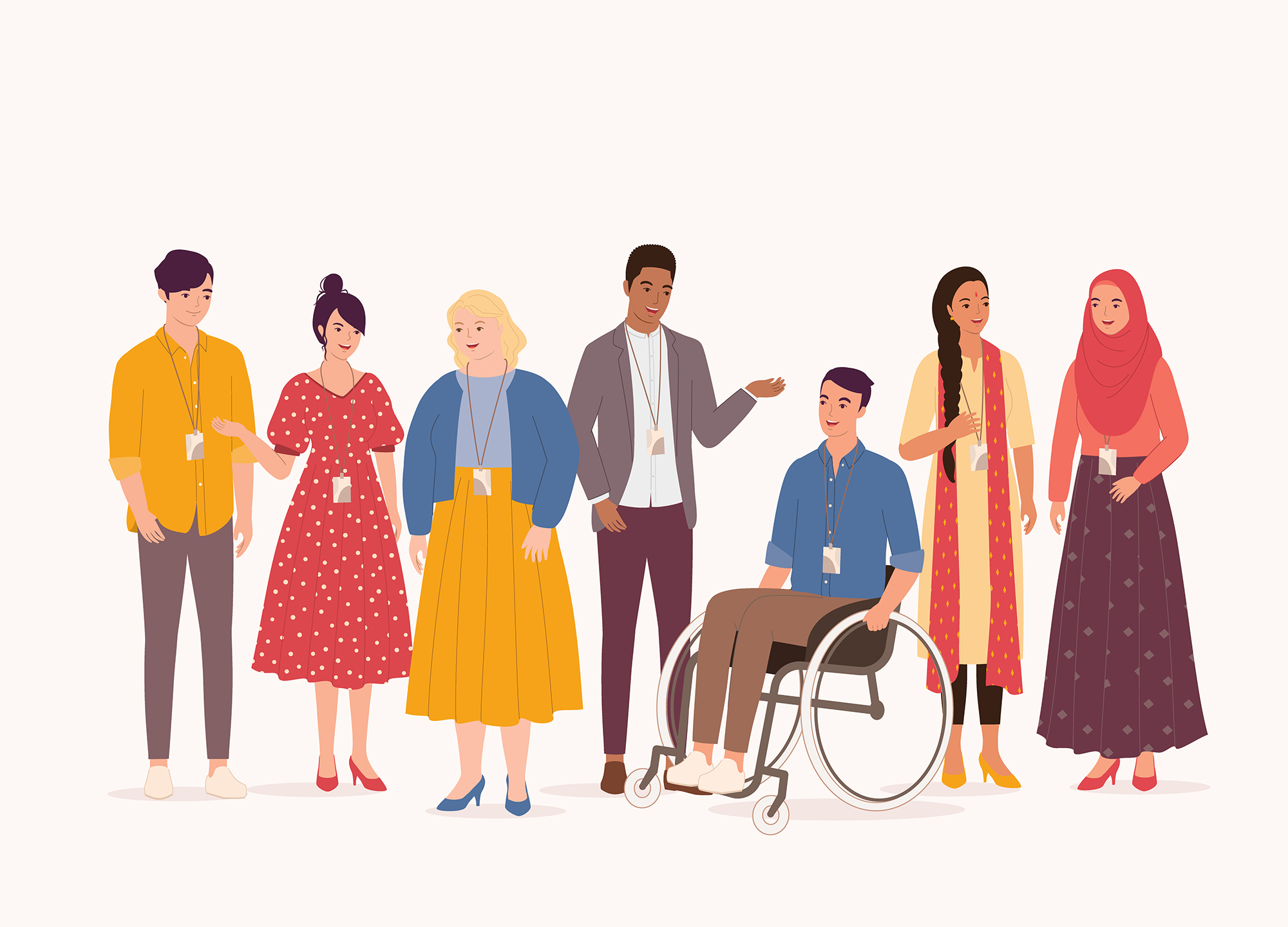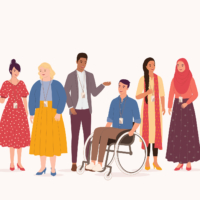In April 2021 the Ministry of Health, Labor and Welfare released a sample format for a new type of resume. A key change was that the gender section was made optional, and other sections, including commuting time, number of dependents, marital status and duty to support spouse, were all omitted as well.
In 2020 Osaka stationery maker Kokuyo Co. begun selling a resume format that had no space to indicate gender. In fact, led by large corporations, an increasing number of Japanese companies are beginning to use entry sheets — the forms job applicants are typically required to fill out separately from the resume — without the gender section and without requiring the usual full names and face photos.
These moves are clearly aimed at giving companies the chance to show they do not discriminate by gender, appearance or sexual preference.
Since the Equal Employment Act bans hiring decisions based on gender, with very limited exceptions, these corporate moves to modify resume forms and entry sheets reflect that they are finally aligning themselves with what is envisioned by the act.
The growing effort to recognize people with diverse personal backgrounds and respect and accept them, often referred to as inclusion, has been attracting attention recently in Japan. One reason for this is that companies have come to understand that active use of people with diverse values and characteristics — from race, age and gender to religion, nationality and even disabilities — is important for increasing corporate innovation and competitiveness.
Many executives in Japan are concerned they may not be able to align their companies with the upward trend of accepting diversity and globalization unless they first change the nation’s traditional corporate culture, which values workforce homogeneity as a strength. In Japan, however, both the market and the working population are shrinking, which has given impetus to the notion that more attention must be paid to human resources from diverse backgrounds and markets.
That said, awareness of diversity and inclusion in Japan is much lower than in other countries. Japan was ranked 116th out of 146 countries in the World Economic Forum’s 2022 Global Gender Gap Report. In particular, the lack of women’s participation in economics and politics was quite noticeable. According to the White Paper on Gender Equality 2022 by the Cabinet Office, the ratio of female managers to all employed people surveyed was 13.2%. That compares poorly with 41.1% in the United States, 38.9% in Singapore and 29.4% in Germany. While the ratio of women in the workforce was 44.7%, which is not especially low, the figure for female managers remains very low.
After the Act to Facilitate the Employment of Persons with Disabilities was amended in 2018, the legally required ratios for hiring people with disabilities began to be raised in phases. As of June 2022, the number of employed people with disabilities in Japan came to about 614,000, the highest figure on record*1. In 2021, the ratio of seniors employed reached 25.1%, exceeding comparable figures in the United States and Europe. In Japan, the number of foreign nationals employed had been on an uptrend in recent years until it was blunted by the COVID-19 pandemic. With companies in many industries facing labor shortages, however, many have sought to diversify their human resources.
Corporate efforts to promote diversity and inclusion are expected to have a significant impact on hiring for Generation Z, or those born between 1997 and 2012, who will soon constitute the main labor force. That is because Gen Zers, who have been exposed to diverse values through social media, have a strong awareness of these concepts.
In a survey of Gen Zers*2 by Tokyo nonprofit ReBit, 97.1% of the respondents said, “Diversity and inclusion being promoted in the workplace is an important factor for me to select a job or continue working for the employer.” Thus, a diversity and inclusion efforts are expected to be an important factor for this generation when judging a company’s value.
On the other hand, as many as 89.1% said they were “aware of only up to 10 companies that are actively engaging in diversity and inclusion measures.”
Adding to this, 38.5% said they “wish to find such companies but do not know how.”
The Japan Business Federation, also known as Keidanren, has pledged to seek to increase the ratio of women in its executive ranks to at least 30% by 2030 and is encouraging companies to position diversity and inclusion as important pillars of their management strategies. Many prominent Japanese companies are actually working to promote diversity and inclusion in one way or another. It would be disappointing if such efforts are not disseminated sufficiently to Generation Z.
Diversity and inclusion are important issues for companies that aim to hire excellent workers and grow in the future, as well as for people playing active roles in society. Moving forward, as more and more companies begin to promote these concepts, the seriousness of their commitment will eventually come under scrutiny in an effort to filter out those that make only half-hearted efforts or treat the concepts as a passing fad to be addressed in form only. When this situation arrives, it will be important for companies to not just communicate an attitude of actively promoting diversity and inclusion, but to explain the philosophy and efforts behind them as well, in an easy-to-understand manner.
*1 Survey on Employment Status of People with Disabilities; Health, Labor and Welfare Ministry, December 2022
*2 Preliminary results of a survey on influence of diversity and inclusion on Generation Z during job hunting and employment; ReBit, October 2020
Download the PDFs of this Diversity & Inclusion Special Vol. 2




